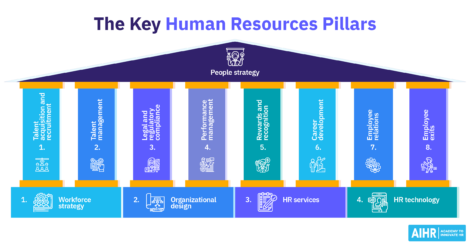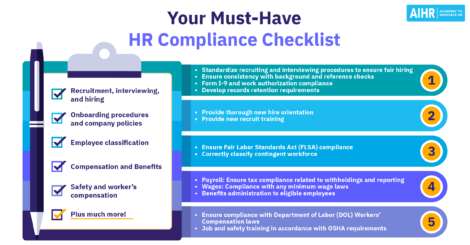What is a Chief Wellness Officer and How To Become One

The role of Chief Wellness Officer was virtually unheard of until 2015 when Deloitte and Kirkland & Ellis LLP appointed well-being leaders in their companies. Still, it took several more years and a pandemic for other organizations to take notice and recognize the need to take a deeper interest in the health and well-being of their employees.
HR leaders have reported that burnout was the major consequence of the pandemic, the US has openly declared a mental health crisis, while the WHO has reported a 25% increase in anxiety and depression worldwide since 2020. Hence why more organizations are starting to create a new C-suite position that prioritizes wellness and places higher importance on the care of their employees.
This article will explore what a Chief Wellness Officer is, the key responsibilities and skills required for the role, the average salary you can expect to earn, and the career steps to take to get there.
Contents
What is a chief wellness officer?
Chief wellness officer job description
Chief wellness officer salary
How to become a chief wellness officer
What is a chief wellness officer?
A Chief Wellness Officer (sometimes known as a Chief Well-being Officer or Chief of Mental Health) is primarily responsible for the overall physical, mental, and emotional health and well-being of the company’s employees.
Chief Wellness Officers usually sit within the C-suite and work closely with the Chief Human Resources Officer (CHRO). It’s more common to find this role in large corporations or government agencies’ health and medicine-based organizations (e.g. hospitals) but following the pandemic medium-to-large organizations from all industries are starting to see the value in having someone dedicated to this work.
Duties and responsibilities will typically include developing and rolling out employee well-being programs (related to fitness, nutrition, stress management, etc.), and ensuring the company’s health plan is sufficient. They will need to be able to read and analyze data, communicate the importance of well-being, be knowledgeable in mental health and wellness, and demonstrate strong empathetic leadership skills.
A Chief Wellness Officer will usually need to acquire 10-15 years of experience in recruiting, managing, and retaining top talent, and their role will generally be a typical 40-hour work week.
Chief wellness officer job description
Job overview
The Chief Wellness Officer will lead wellness initiatives across the organization with the goal of improving the physical, mental and emotional health and well-being of all employees. They will work closely with the Chief Human Resources Officer to develop, implement and evaluate wellness programs that encourage healthy lifestyle choices and reduce health concerns.
They will also collaborate with other departments to integrate wellness into the organizational culture. The ideal candidate will have a strong health background (with qualifications), HR experience managing employees and developing and implementing employee programs, and vast knowledge and interest in health and wellbeing.
Chief wellness officer roles and responsibilities
Roles:
- Advocate and lead the organization on wellness/ well-being
- Communicate the vision and get everyone on board
- Advance equity, leadership, well-being, respect etc.
- Creating and maintaining a culture of wellness in the workplace
- Provide ongoing support for employees in their health and wellness
- Collaborate with HR, business leaders and other departments to integrate wellness into the culture
Responsibilities:
- Identify problems, obstacles and roadblocks to health and wellbeing
- Design an organizational strategy to create and maintain a wellness culture
- Implement, monitor effects and satisfaction and improve the wellness strategy
- Develop education initiatives (e.g. health screenings and disease prevention programs)
- Develop and implement employee wellness policies and programs (e.g. weight loss, stress reduction, nutrition)
- Ensure consistent communication across the organization
- Report on results
- Develop and manage employee health insurance plans
- Conduct regular employee health assessments (height, weight, body fat, blood pressure, cholesterol etc.)
- Identify at-risk employees and create individual plans with specific resources to help improve their health
- Work closely with other departments to integrate wellness into the company culture
- Manage the budget for the wellness program and ensure its cost-effective
- Stay ahead of trends and developments in the health and wellness field
- Monitor compliance with laws and regulations pertaining to employee wellness
Chief wellness officer skills and qualification requirements
Skills:
- Leadership: A Chief Wellness Officer sits in the C-suite team which makes them part of the organization’s leadership team; therefore they must possess strong leadership skills to help drive forward their strategy, achieve buy-in from all departments, and inspire greater health and well-being across the company.
- Health and wellness: A thorough understanding of health and wellness practices as well as evidence-based approaches to wellness will be required to help employees make positive changes to their lifestyles. A mix of knowledge and skills will help them create effective programs that encourage exercise, and healthy eating, and help with stress management.
- Communication: A Chief Wellness Officer will need to effectively communicate with business leaders, other department managers, employees, and wellness professionals on a regular basis to discuss health and wellness strategies and programs and emphasize the importance of maintaining a healthy lifestyle. It will also be important to develop relationships with a diverse range of people.
- Marketing: Marketing skills will be important to promote their health and wellness policies and programs and encourage full participation from employees and healthy habits. For example, a carefully crafted marketing campaign that encourages employees to rest when they’re ill so they fully recover could help reduce burnout and improve employee engagement and team morale in the long run.
- Strategic planning: Planning, strategy and goal-setting will be essential for successfully developing and rolling out wellness programs in the organization that have a real impact. A Chief Wellness Officer must be able to identify the problems, propose solutions, and continually track their progress.
Qualifications:
- A bachelor’s degree in a health-related field (psychology, social work, exercise science, nutrition or kinesiology)
- 10-15+ years experience in HR (talent management, training and development, compliance, diversity and inclusion, and compensation and benefits)
- 5+ years experience in a wellness or mental health field (as a physician, nurse, physical therapist or a health educator)
- Experience in a managerial role (as a manager, director or supervisor)
- A proven track record of designing and implementing health and wellness policies and programs
Preferred experience & qualifications:
- Knowledge of current and future trends in the health and wellness industry
- Experience working within a corporate setting
- Familiarity with data, analytics and relevant software (such as SPSS or SAS)
- Certification in meditation, yoga, or another mind-body practice.
Chief wellness officer salary
A Chief Wellness Officer’s salary varies due to a person’s level of education, experience, and expertise, as well as the size and industry of the organization. For example, a startup company who has just created the CWO role may offer a lower salary compared to a large multinational company.
According to Comparably, Chief Wellness Officers salaries in the US range from $68,600 to $187,200. They report that the current average salary for a CWO in New York is $165,073, and $153,068 in Chicago.
In contrast, Glassdoor reports that the current average salary for a CWO in New York is $88,006 and $82,471 in Chicago, which suggests that New York has SMEs who still recognize the importance of this role but have a smaller budget, and will likely hire people with less experience.
Most CWOs in the US start with a base salary and earn additional compensation in the form of bonuses or commissions.
How to become a chief wellness officer
1. Gain the credentials
To become a Chief Wellness Officer you need to make sure you have the qualifications, skills and experience required for the position. Gaining a solid understanding of various departments within HR (diversity & inclusion, learning & development, compensation & benefits, management, and leadership) is essential. You will also need a strong background in healthcare as well as business.
2. Become an expert in well-being
To perform in the CWO role, it’s important to become an expert in healthcare and well-being from a physical, mental and emotional point of view.
This will help you create, implement and fine-tune an employee wellness program that strives for a culture of wellness and fosters employee engagement and fulfillment. This is why many Chief Wellness Officers begin their careers in the health industry, however, it’s essential that they pick up HR, business and leadership skills along the way to ensure success in this role.
3. Develop leadership and strategy skills
Since the Chief Wellness Officer sits within the C-suite and will need to build relationships with other business leaders, managers, employees and advisors, and inspire and lead employees toward a healthier lifestyle, leadership skills are essential. You can build these by working in a supervisor, manager or leadership role prior to taking on this position, and attending training courses to help cultivate these skills.
As a CWO you will also be responsible for creating and implementing a company-wide strategy for health and wellness, so it’s important you have strong planning skills, think strategically, are able to set and achieve goals using KPIs, read and analyze data, and pivot when something isn’t working.
4. Keep up to date with trends and best practices
Education and qualifications are just the first step to becoming an expert in well-being. Constant learning and development, acquisition of new skills, and an eye on emerging trends are all vital to ensure a CWO stays ahead and is able to provide employees with the tailored knowledge and support they need.
That means attending training courses (online and in-person), regularly brushing up on skills, reading online journals, blogs and magazines dedicated to health and wellness, attending industry events, seeking advice from other experts, and more.
Key takeaways
- The Chief Wellness Officer role is on the rise: Following the pandemic and a global increase in mental health concerns, more organizations are starting to create a new C-suite position that prioritizes wellness and places higher importance on the care of their employees.
- An overview of the role: The Chief Wellness Officer will lead wellness initiatives across the organization with the goal of improving the physical, mental and emotional health and well-being of all employees. They will work closely with the Chief Human Resources Officer to develop, implement and evaluate wellness programs that encourage healthy lifestyle choices and reduce health concerns.
- Key skills required: A foundation in HR (diversity & inclusion, learning & development, compensation & benefits, management, and leadership), leadership, health & wellness, communication, marketing and strategic planning
- How to become a chief wellness officer: Gain the qualifications and skills required, become a true expert in health and wellbeing, gain experience in the field and study what other organizations are doing to boost health and wellness, and remain up to date with trends and best practices.
Weekly update
Stay up-to-date with the latest news, trends, and resources in HR
Learn more
Related articles
Are you ready for the future of HR?
Learn modern and relevant HR skills, online











